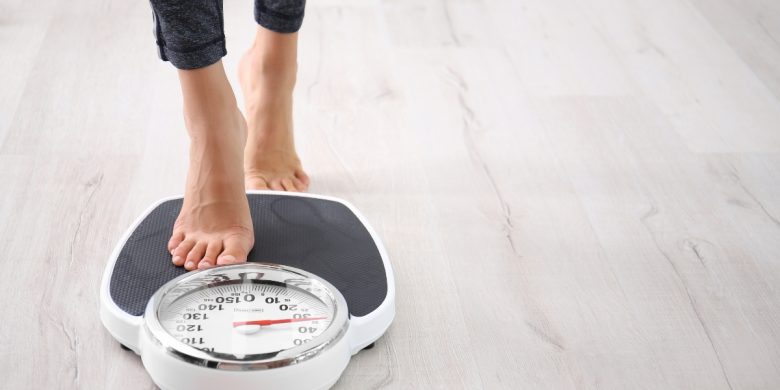Embarking on a weight loss journey can feel both exciting and overwhelming. The benefits are clear—improved health, more energy, and a boost in confidence. Yet, many people find themselves struggling with where to start or how to maintain momentum. Common challenges like navigating conflicting diet advice, finding time for exercise, and staying motivated can make the process feel like an uphill battle.
This guide is designed to cut through the noise and provide a clear, sustainable path to achieving your weight loss goals. We’ll break down the fundamental principles, from nutrition and exercise to mindset and long-term maintenance. You’ll learn practical strategies that you can integrate into your daily life, helping you build healthy habits that last. By the end of this post, you’ll have a comprehensive toolkit to start your journey with confidence and clarity.
Understanding the Basics of Weight Loss
Before diving into specific diets or workout plans, it’s crucial to understand the core principles that govern weight loss. Building a solid foundation of knowledge will empower you to make informed decisions that are right for your body and lifestyle.
Calorie Deficit Explained
The most fundamental concept in weight loss is the calorie deficit. Simply put, this means consuming fewer calories than your body burns for energy. Your body uses calories for everything it does, from breathing and circulating blood to physical activity. When you provide it with fewer calories than it needs, it turns to stored fat for energy, which results in weight loss. You can achieve a calorie deficit by either reducing your calorie intake, increasing your physical activity, or, most effectively, a combination of both.
The Role of Macronutrients
Not all calories are created equal. The source of your calories—macronutrients—plays a vital role in your body’s function, satiety, and overall health. A balanced diet should include all three macronutrients:
- Protein: Essential for building and repairing tissues, including muscle. A higher protein intake can increase feelings of fullness, boost your metabolism, and help preserve muscle mass during weight loss. Good sources include lean meats, poultry, fish, eggs, dairy, legumes, and tofu.
- Carbohydrates: Your body’s primary source of energy. Opt for complex carbohydrates like whole grains, fruits, and vegetables, which provide sustained energy and fiber. Simple carbs, like those in sugary drinks and processed snacks, can cause energy spikes and crashes.
- Fats: Crucial for hormone production, vitamin absorption, and brain health. Focus on healthy, unsaturated fats found in avocados, nuts, seeds, and olive oil. Limit your intake of saturated and trans fats, which are often found in processed foods and can negatively impact heart health.
The Importance of Hydration
Water is a weight loss powerhouse that often gets overlooked. Staying properly hydrated is essential for numerous bodily functions that support your goals. Drinking enough water can boost your metabolism, help your body burn fat more efficiently, and act as a natural appetite suppressant. Sometimes, our brains mistake thirst for hunger, so drinking a glass of water before reaching for a snack can help manage cravings. Aim to drink at least eight 8-ounce glasses (about 2 liters) of water per day, and more if you are physically active.
Effective Diet Strategies
With the basics covered, let’s explore practical strategies for creating a diet that is both effective for weight loss and sustainable for the long haul.
Balanced Meal Plans
A balanced meal plan doesn’t have to be complicated or restrictive. The goal is to create meals that are nutritious, satisfying, and enjoyable. A simple approach is the “plate method”: fill half your plate with non-starchy vegetables (like broccoli, spinach, or bell peppers), a quarter with a lean protein source, and the final quarter with a complex carbohydrate. This ensures you get a good mix of nutrients, fiber, and protein to keep you full and energized.
Portion Control
Even healthy foods contain calories, and overeating them can hinder your progress. Portion control is about learning to recognize appropriate serving sizes. You don’t always need measuring cups; simple visual cues can help. For example, a serving of protein is typically about the size of your palm, a serving of carbs is about the size of your cupped hand, and a serving of fat is about the size of your thumb. Eating from smaller plates can also trick your brain into feeling satisfied with smaller amounts of food.
Mindful Eating
Mindful eating is the practice of paying full attention to your food and the experience of eating. It involves slowing down, savoring each bite, and listening to your body’s hunger and fullness cues. This practice can help you recognize when you’re truly hungry versus when you’re eating out of boredom or stress. By being more present during meals, you’re more likely to feel satisfied with less food and develop a healthier relationship with eating.
Incorporating Exercise into Your Routine
While diet is a critical component of weight loss, exercise is essential for accelerating results, improving metabolic health, and building a stronger body.
Cardio Workouts
Cardiovascular exercise, or “cardio,” is any activity that raises your heart rate. It’s excellent for burning calories and improving heart health. There are plenty of options to choose from, so you can find something you genuinely enjoy. Examples include:
- Brisk walking or running
- Cycling
- Swimming
- Dancing
- Using an elliptical machine
Aim for at least 150 minutes of moderate-intensity cardio per week, which can be broken down into 30-minute sessions five days a week.
Strength Training
Strength training involves using resistance to build muscle strength and endurance. This is a crucial element of a weight loss plan because muscle tissue burns more calories at rest than fat tissue does. By building more muscle, you can effectively boost your resting metabolism. You can use free weights, weight machines, resistance bands, or even your own body weight for exercises like squats, push-ups, and planks. Aim for at least two strength training sessions per week, targeting all major muscle groups.
Flexibility and Yoga
Flexibility work, like stretching and yoga, is important for overall fitness, injury prevention, and stress reduction. Yoga, in particular, combines physical postures with breathing exercises and meditation, which can enhance mindfulness and support mental well-being—a key aspect of a successful weight loss journey.
Tracking Progress and Staying Motivated
Staying consistent is often the hardest part of losing weight. These strategies can help you stay on track and keep your motivation high.
Using Fitness Apps
Technology can be a powerful ally. Fitness apps like MyFitnessPal, Lose It!, and Cronometer make it easy to track your calorie intake, monitor your physical activity, and see your progress over time. Seeing your efforts translate into results can be incredibly motivating.
Setting Realistic Goals
Setting large, ambitious goals can feel inspiring at first, but they can also lead to burnout. Instead, focus on setting small, achievable goals. For example, instead of aiming to lose 30 pounds, focus on losing 1-2 pounds per week. Or, set a goal to exercise three times this week. These smaller wins build momentum and confidence.
Rewarding Yourself
Celebrate your milestones along the way! When you reach a goal, reward yourself with something that isn’t food-related. This could be a new workout outfit, a relaxing massage, or a weekend getaway. Acknowledging your hard work reinforces positive behavior and keeps you motivated for the next step.
Common Mistakes to Avoid
Navigating the world of weight loss can be tricky, and it’s easy to fall into common traps. Being aware of these pitfalls can help you avoid them.
- Crash Dieting: Severely restricting calories might lead to quick initial weight loss, but it’s unsustainable and can slow your metabolism, making it harder to lose weight in the long run.
- Over-Exercising: Pushing your body too hard without adequate rest can lead to injury, burnout, and hormonal imbalances. Rest and recovery are just as important as the workouts themselves.
- Ignoring Mental Health: Stress, anxiety, and poor sleep can all negatively impact your weight loss efforts by affecting your hormones and decision-making. Prioritize self-care and stress management.
Supplements: What Helps and What Doesn’t
The supplement industry is vast, but only a few products have solid scientific backing for weight loss.
- Protein Powders: A convenient way to increase your protein intake, which can help with satiety and muscle preservation.
- Fiber Supplements: Can help increase feelings of fullness and support digestive health, making it easier to stick to a calorie deficit.
- Omega-3 Fatty Acids: While not a direct weight loss aid, these healthy fats have anti-inflammatory properties and support overall health, which is beneficial during a weight loss journey.
Be wary of supplements that promise rapid, effortless weight loss. These are often ineffective and can sometimes be harmful. Always consult with a healthcare professional before starting any new supplement.
Maintaining Your Weight Loss
Reaching your goal weight is a huge accomplishment, but the journey doesn’t end there. Maintaining your weight requires shifting your focus from “dieting” to creating a sustainable, healthy lifestyle.
- Focus on Long-Term Changes: Continue with the healthy eating and exercise habits you’ve built.
- Regular Check-Ins: Weigh yourself periodically (e.g., once a week) to stay accountable and catch any small weight gains before they become significant.
- Seek Professional Help: If you find yourself struggling, don’t hesitate to consult a registered dietitian or a certified personal trainer for ongoing guidance and support.
Frequently Asked Questions
Q: How many calories should I eat to lose weight?
A: This varies greatly depending on your age, sex, weight, height, and activity level. A good starting point is to use an online calculator to estimate your daily maintenance calories and then subtract 500 calories to create a deficit that should result in about one pound of weight loss per week.
Q: What are the best exercises for weight loss?
A: The best exercise is the one you enjoy and will do consistently. A combination of cardiovascular exercise (like running or cycling) to burn calories and strength training to build metabolism-boosting muscle is ideal.
Q: Can I lose weight without exercise?
A: Yes, it is possible to lose weight through diet alone, as weight loss is primarily about creating a calorie deficit. However, incorporating exercise will accelerate your results, improve your body composition, and provide numerous other health benefits.
Q: How important is sleep for weight loss?
A: Sleep is incredibly important. Lack of sleep can disrupt the hormones that regulate hunger (ghrelin and leptin), leading to increased cravings and appetite. Aim for 7-9 hours of quality sleep per night.
Q: What should I do if I hit a weight loss plateau?
A: Plateaus are a normal part of the process. Try changing up your workout routine, reassessing your calorie intake (as your needs may have changed as you’ve lost weight), or focusing on other measures of progress, like how your clothes fit or your energy levels.
Your Path to a Healthier You
Losing weight is a personal journey, and there is no one-size-fits-all solution. The key is to find a balanced, sustainable approach that works for you. By focusing on the fundamentals of nutrition, incorporating regular physical activity, and being patient and kind to yourself, you can achieve your goals and build a healthier, happier life. Your journey starts with a single step—take it today.




